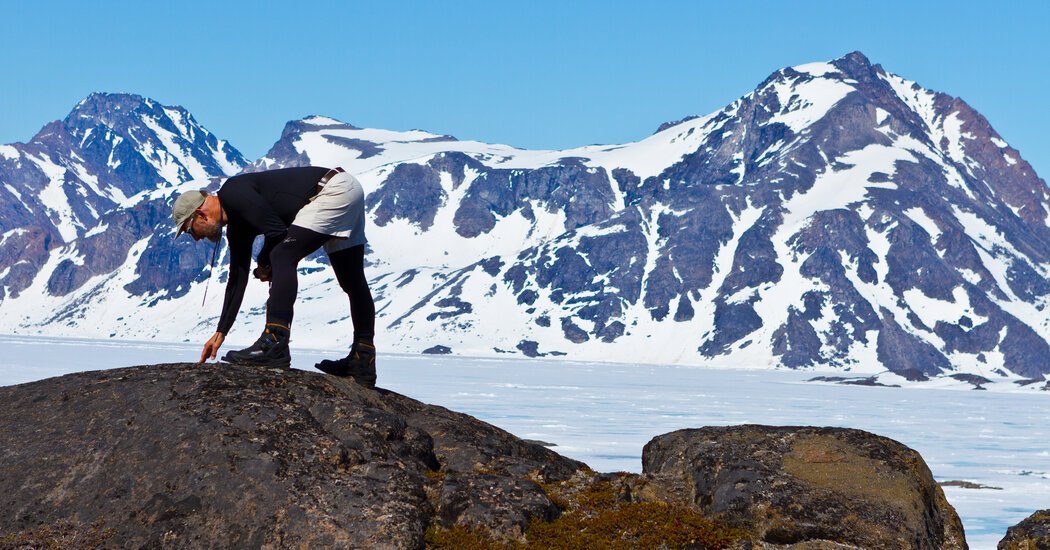
Somewhere deep inside a glacier in Greenland are the remains of Camp Century, a short-lived experiment in making the Cold War literal. In 1959, the U.S. Army began building a network of tunnels, carved inside the ice, that it hoped might become a launch site for nuclear missiles.
By 1967, the military had abandoned the idea and the base. But the samples of ice and frozen sediment that scientists extracted from deep underneath Camp Century are still providing new insights into the planet’s history.
When Paul Bierman, a geologist at the University of Vermont, began studying some of these samples, he made a surprising discovery. Scientists had once believed that Greenland’s ice sheet had been largely stable for the last 2.6 million years. But what Dr. Bierman and his colleagues saw under the microscope provided clear evidence that parts of the ice sheet had temporarily melted away far more recently. Roughly 400,000 years ago, the site had been free of ice.
Dr. Bierman spoke to The New York Times about this discovery, which he chronicles in his new book, “When the Ice Is Gone.” This conversation has been condensed and edited for clarity.
We wouldn’t have these samples if not for Camp Century. What was the Army doing in Greenland?
That started in World War II. Greenland is upwind of the European theater, so in order to do the weather forecasting, they needed boots on the ground in Greenland. It was also the shortest path to bring airplanes from the U.S. to the Allies.
The U.S. got its foothold in Greenland, and what they realized is they didn’t know very much about cold-region science. The men who were stationed there didn’t have the right sleds, couldn’t move across the ice safely, didn’t understand how ice and snow behaved.
So the U.S. military started putting a lot of money into ice. They built several camps under the ice and then started drilling this deep ice core at Camp Century. When they got to the bottom of the ice sheet, they kept going and brought back almost 12 feet of what we call sub-ice material — think of it as frozen soil and water. That was a first.
Within a couple of years of bringing that core up, looking at just the clear ice part, they figured out more than 100,000 years of climate history. But they ignored the sediment at the bottom. In 2019, we were given samples of that bottom material. And that’s when things really got fun.
In your book, you say that these samples led to the only real eureka moment of your scientific career. Walk me through that.
The samples showed up on this really steamy July afternoon in a DHL box with a lot of freezer packs. We got this incredible whiff of diesel fuel, because in the 1960s they used a mix of diesel fuel and trichloroethylene — that’s dry cleaning fluid — to keep the hole in the ice open while they were drilling.
We were sieving these samples, which involved trying to sort them by the size of the grain. So we take out the cobbles and the sand and the silt. Everybody involved was hot and tired, and I was just absent-mindedly staring down at this bin of water with the sandy fraction. All of a sudden I see little black flecks floating at the top, and I sort of did a double take. I looked over at the two people with me and said, “I think we have fossil plants in here.”
I took a pipette, and I squeezed up these little black flecks. Drew Christ, who was a postdoctoral fellow with me, popped them under the microscope. And there were about 10 seconds of dead silence before he popped his head up with a string of happy expletives.
We were staring at plants that grew where the ice sheet is today. It didn’t take long, when the three of us stopped babbling at each other, to realize that this was probably the biggest discovery any of us had made in our in our scientific lives.
From then on, we kept finding fossils: fungus, insect parts, small pieces of wood, leaves, mosses, a poppy seed. It’s stunning.
What was so stunning?
It grabs your gut to see a poppy seed where today there’s miles of ice. It is the kind of evidence that everybody understands: Today it’s ice, and yesterday it was plants.
It didn’t take us long that day to have one of those moments of, “Wow, this is cool, and wow, this is frightening.” Because it all happened before we started changing the climate. So, now we know Greenland can melt on its own — and what are we doing? We’re giving it a huge kick in the behind to melt even faster.
But humans were ingenious enough to figure out, in the 1950s, how the ice sheet worked, how to live in it and how to drill an ice core. I don’t think saving the Greenland ice sheet is impossible. I think it’s going to take that same kind of determination.





